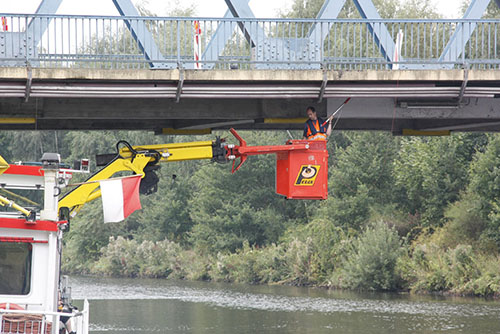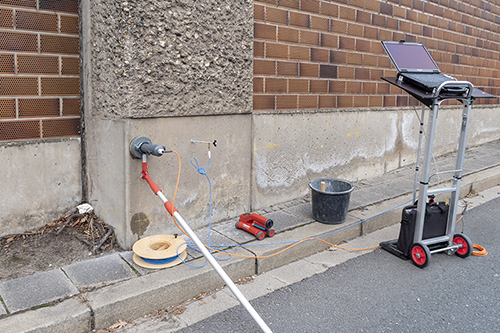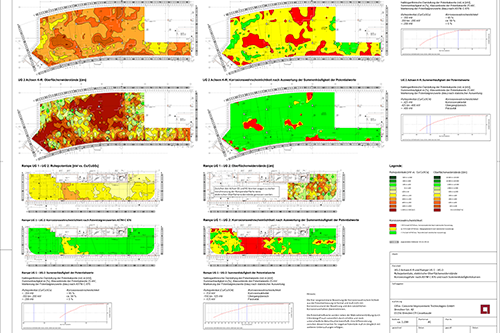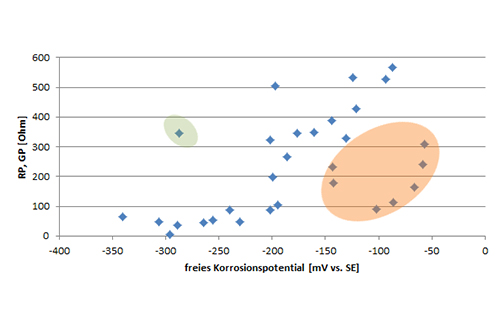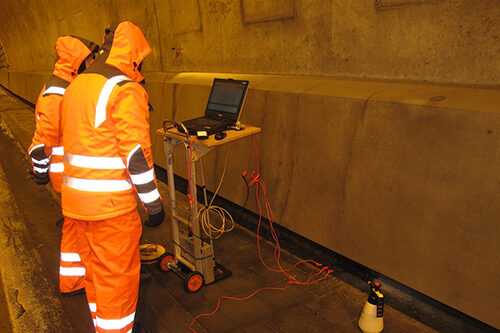Services
Corrosion diagnosis
A corrosion diagnosis is substantially more than a record of damage – it is the key to understanding the structural behaviour and to make appropriate decisions about the timing and extent of actions for maintenance and repair. Frequently, the result of such a diagnosis deviates from the visual impression of the structure, but has a sound backup of measurement data.
While the visible and audible damage on concrete elements is a sign for results of already existing corrosion up until the moment of survey (if caused by corrosion), the corrosion related measurements give indications about the corrosion as a process during the survey. Thus, the corrosion active spots identified by the corrosion measurements do not need to be identical with the areas of assessed damage. The potential survey, which is used to obtain the corrosion likelihood caused by chlorides, is strongly influenced also by the moisture content of the concrete and the concrete cover. This may complicate the corrosion assessment considerably. The more parameters get measured and compared, the better the corrosion behaviour can be assessed, and individual structural reserves can be recognised and used in maintenance and repair.
Important tools in this respect are the enhanced corrosion measurement techniques – AC impedance, galvanostatic pulse, linear polarisation and Tafel polarisation. They give precise information about the corrosion behaviour, deliver a reasonable assumption of the corrosion rate and can even indicate the value of the chloride threshold for the investigated structural part (at a sufficient number of test locations).
